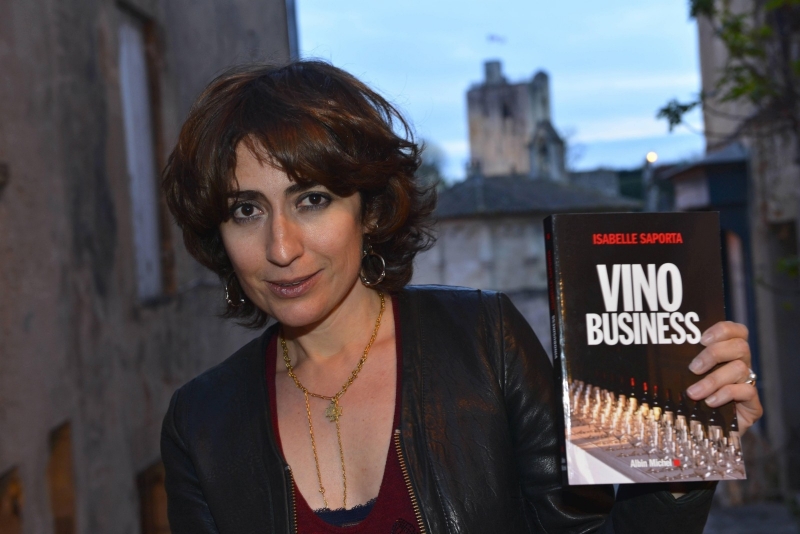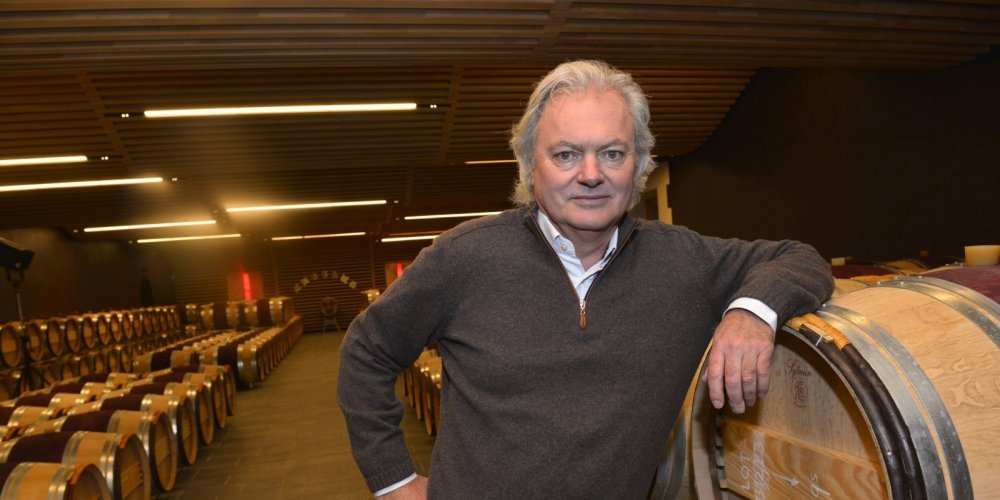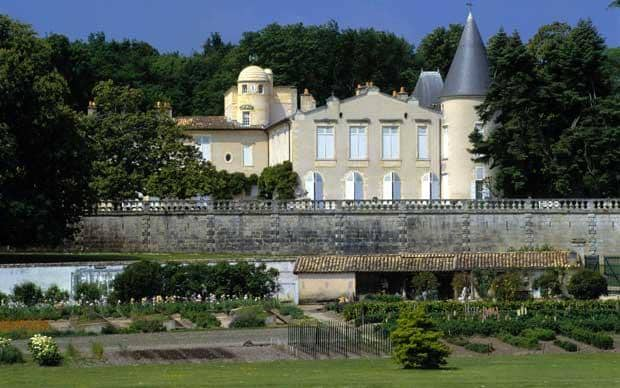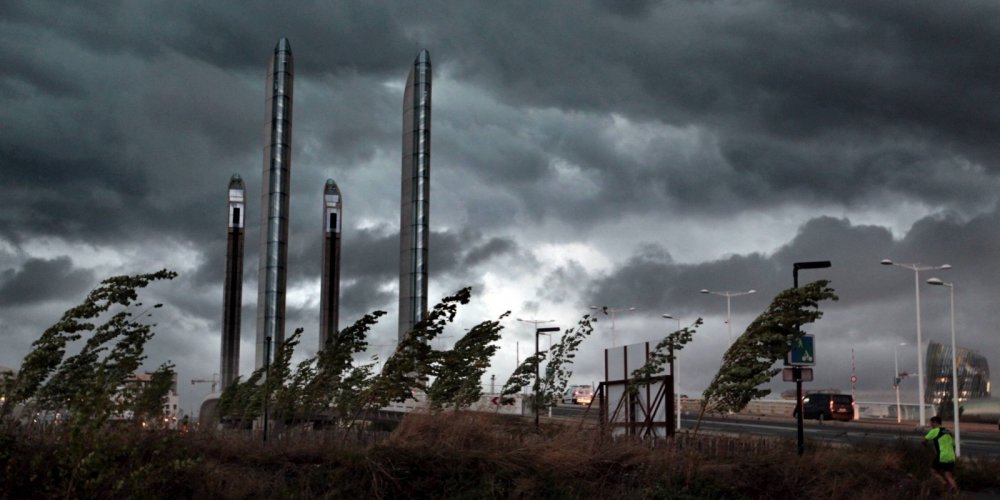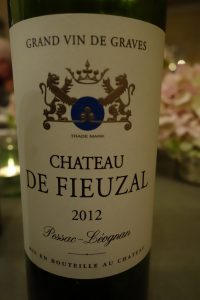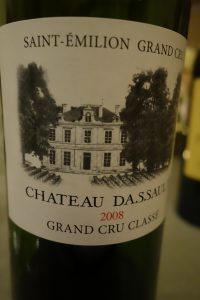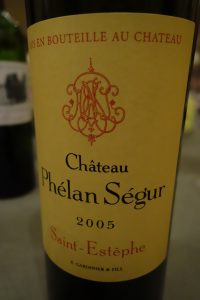
The Académie du Vin de Bordeaux kindly invited me to dinner at Château d’Yquem last night (9th of September). I have visited the château on a fair number of occasions, but certainly never enjoyed a meal there, so I was really looking forward to this.
The château has three dining rooms and there were about 60 of us in the largest one.
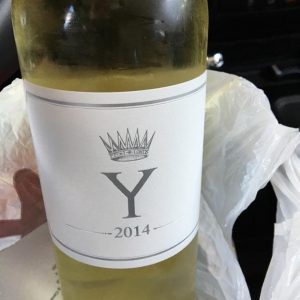
The meal started out with 2014 Y on the terrace. This wine has changed completely from when it was first introduced in 1959. For many years, the grapes were picked after the ones used to make Sauternes. Now they’re picked before. The 2014 (60% Sémillion, 40% Sauvignon Blanc, and no Muscadelle) was an ideal aperitif. Whereas Y used to be on the thick side and pretty much like a dry, or mostly dry Sauternes, the new generation Y is crisp, elegant, and seemingly on the light side. This 2014 is so enjoyable now that I wonder how it will change over time or if it actually needs to age. The oak is definitely unobtrusive.
By the way, Pierre Lurton explained that 2016 Y has already been picked and pressed. This year has been really odd weatherwise, with a rotten spring and early summer, but a long-lasting heat wave in September, with temperatures a full 10°C above the seasonal average on certain days. Problems with scorching have been encountered in the red wine vineyards…

The first course (thon mi-cuit, gelée de gazpacho, avocate guacamole au citron vert, sorbet tomate-basilic) was accompanied by white 2012 Ch. Fieuzal. I’ve had a few premoxed bottles from this estate in the past, but when white Fieuzal shows well, it shows very well. It is one of those rare estates in Bordeaux where the white wine has better press than the red, and sells for much more. In any event, in all honesty, the Pessac-Léognac was better in my opinion than the dry Sauternes. It displayed great balance and a wonderful flinty aftertaste. The marked acidity seemed to fit in beautifully with the overall structure, and the oak influence was positive.
The second course (pigeon au foie gras, polenta au chorizo et piquillos, gaufrette safran, mousseline de cerfeuil) was served with two red wines, both of which I quite enjoyed. Incidentally, both were made by women who were present at the meal and who commented each other’s wines for everyone’s benefit.
Château Dassault is a Saint Emilion grand cru classé owned by one of the richest men in France (aerospace, etc.). The 2008 had a sweet, plummy bouquet with good oak and a very rich flavour with a velvety texture. I would only fault the overly obvious presence of alcohol on the finish. This was a strong wine that can use a little more time to show its best.
Château Phélan Ségur in Saint-Estèphe has long been a much-respected cru bourgeois (previously an “exceptionnel”, although this distinction has disappeared). The 2005 was classic claret with a lovely Médoc nose featuring graphite and violet overtones. The texture was silky and the aftertaste was long and assertive. I expected this 2005 to be more forward than it was. It wasn’t terribly closed-in, but clearly has good mid-term ageing potential.
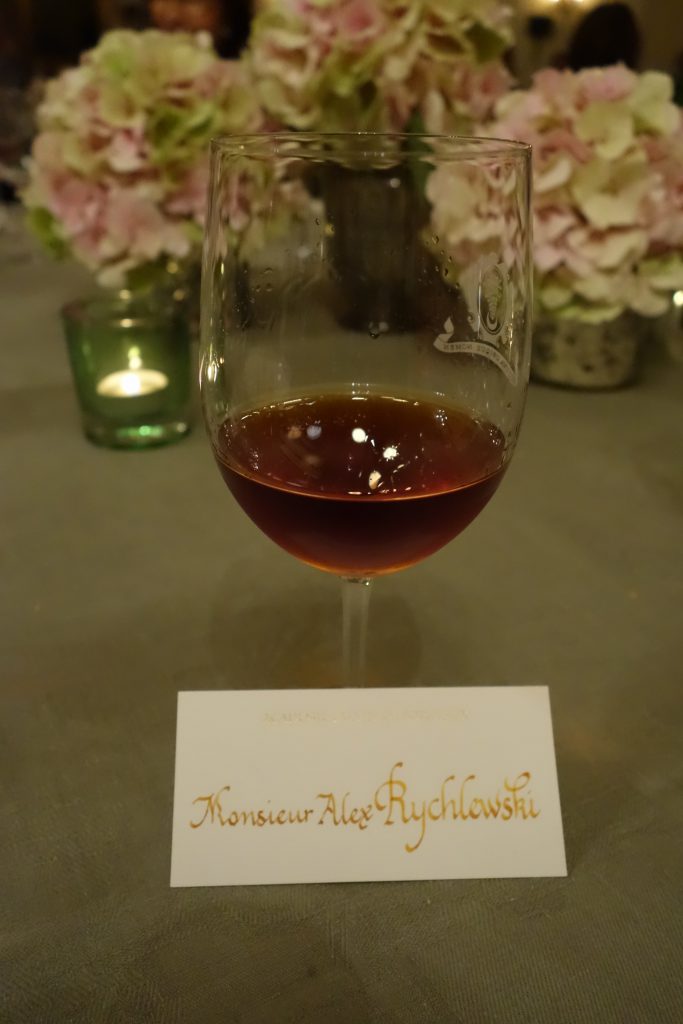
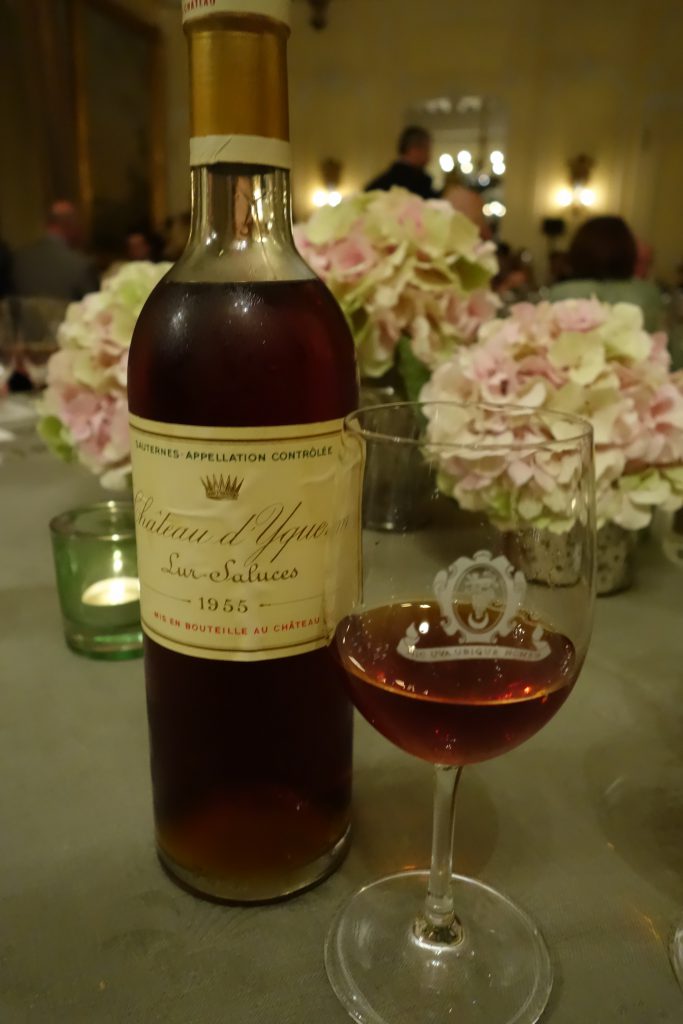
1955 Yquem was served with dessert (crémeux de citron, pamplemousse mariné au miel et citron vert, sorbet agrumes). The color is hard to describe, and people at my table agreed that the wine looked a little older than its years, with a mahogany and golden hue as well as a faint pinkish tinge. Although unspectacular, the nose was engaging with hints of mandarine orange, orange peel, and spice. However, the wine well and truly strutted its stuff on the palate, which was gorgeous. The texture was caressing, silky, and phenomenally sensual. There were flavors of crème brûlée and caramel as well as a host of citrus and tropical fruits (mango). I also found the unmistakable vanilla component that is a hallmark of Yquem to me – and which I do not attribute to oak. This vintage of Yquem showed good acidity and will of course live for decades to come, but it is as good as it ever will be in my opinion.
All in all, not a bad way to spend a Friday evening…
